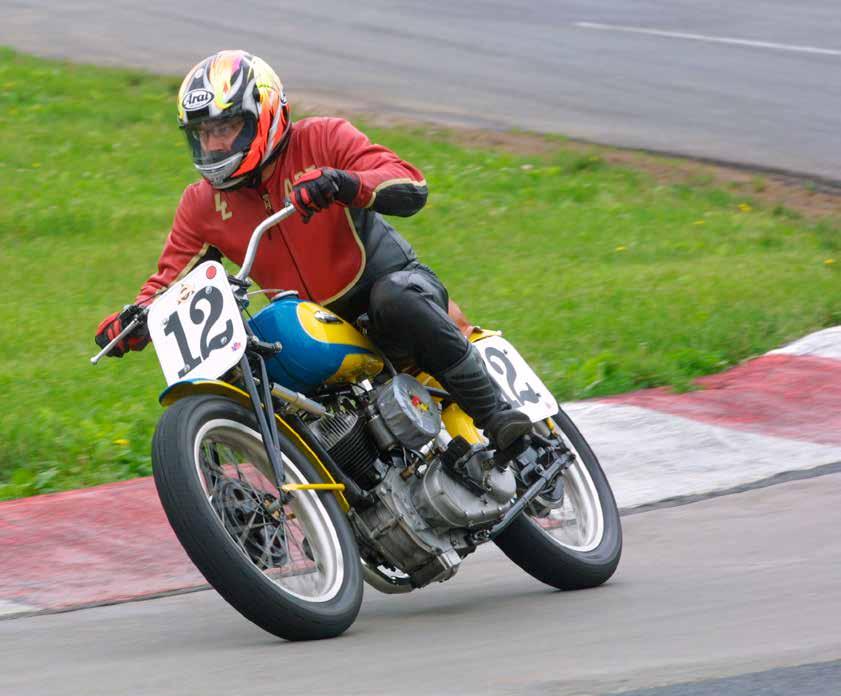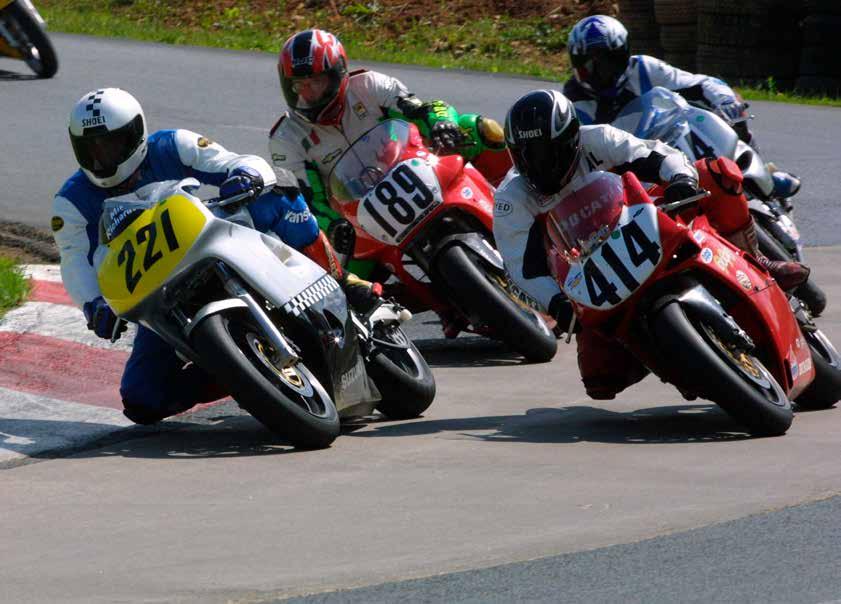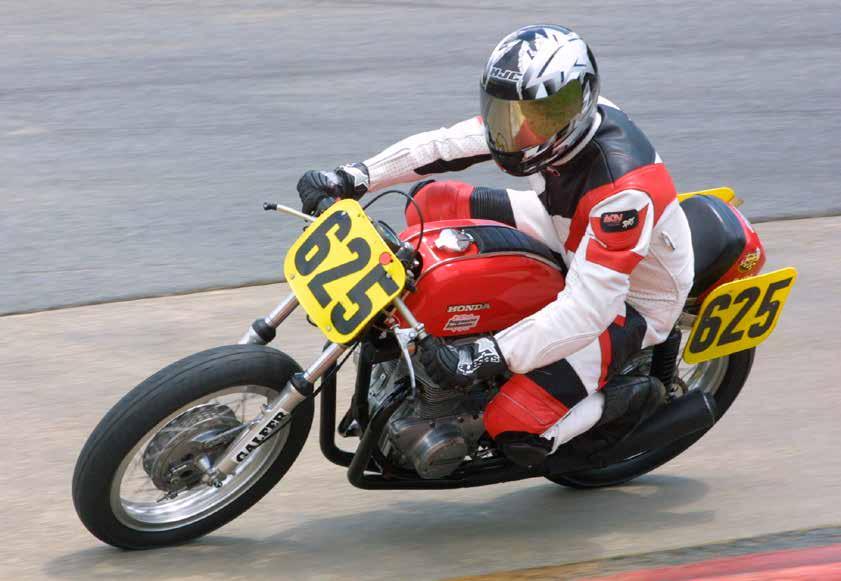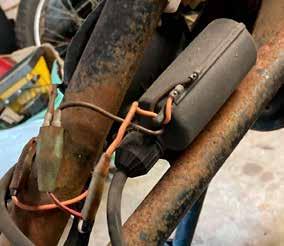
4 minute read
Blast from the past - Summit Point
Josef Brenner - 500 Premier


Unidentified Rider

TM
Blast from the past Summit Point, WV 2001
Photos by:


TOOL BOX
TIPS
By Gregg Bonelli
CHASE RACE LEADERS, NOT PROBLEMS AT THE TRACK
There is a great deal of useful knowledge that is not being remembered or properly appied. I suppose that could be said about most things, but I say it about your vintage motorcycle here and offer the following illustration. We are racing old bikes, some much older than others. The assumption that what is working is fine and never needs to be replaced can have unfortunate consequences. If it’s a physical part we can see and inspect for cracks, or a moving part that needs lubrication and can be measured for clearances, then we have some methodology available to make a proper evaluation. Still, we may be unaware of the diagnostic tools available.
I went to tech inspection once and the official took the bike, reached in and grabbed the top of the rear wheel and moved it laterally before announcing my swing arm bushings were worn. I was stunned. I knew about bushings and wear and how to replace parts with new ones, but I hadn’t known that simple test. He was right and I was able to replace them before the problem hurt me (or someone else), so I was grateful. But some things are not so amenable to simple inspection. Electrical parts come to mind. A condenser in a points ignition system may look just fine until it fails. Worse yet, a new part may not be good for some unknown reason so it would be prudent to know how to test a part before a potential failure becomes a frustration that costs you a chance to race (the second worst possible time, if you catch my drift). I lost a season due to a faulty CDI and my back-and-forth exchanges with the manufacturer did me no good. I needn’t tell you that in your career you will only make it to the grid so many times, and of those, only so many opportunities will play out as you intended. You increase your chances of enjoying racing by eliminating mechanical and electrical failures before the green flag rather than resorting

to some patch and go plan of dodging problems that result in dire consequences.
At the meeting before the Challenger launch one cold Florida morning, a scientist dropped an o-ring in a glass of ice water to demonstrate the potential for failure but those in charge were unpersuaded by its brittle failure. The spectacular results that followed, however, had tragic consequences. If your machine fails you suddenly on the racetrack, in that moment to sort things out you are a hazard to others. For your sake and mine, find and fix your problems in the workshop, not on the track.
I will take just one item and demonstrate a simple test to indicate whether the 50-year-old ignition coils on your RD Yamaha need to be replaced. There are other tests for other makes and model, obviously. To take this lesson and apply it to your situation, you must find them yourself and then do what is required. It’s not just science; it’s rocket science. Ignition coils have primary and secondary circuits—windings of wire concealed inside an enclosed case, so no visual inspection. Coils can be reliably tested using a simple multi-tester if you know the specs and how to use the tester. If you don’t have a journal for each machine you race, you need to create one to list essential specs and readings for every component: Compression for each cylinder; ignition timing settings; jet sizes; replacement dates for electrical/ignition components; tire pressures; gearing for each track with corresponding lap times, etc. I know it’s a constant flow of information which may involve some trial and error, but if you perform your own maintenance and repairs, and there’s no crew chief managing it, then you must be the person responsible. Trusting luck and guesswork are not options. Finally, and perhaps most obviously, if you don’t carry replacement components not readily available, then you may travel a long distance, spend a good deal more money, and still not get to race. I recommend bringing a spare powerplant if you can. That would be the whole setup, carbs, cables, coils and all so if you experience a failure on Saturday, you still have a chance to race on Sunday and salvage some satisfaction from the experience. The chassis will likely survive whatever goes wrong, and space is at a premium, but a box with a powerplant should fit, and you can always sit on it at the campfire.
Safe racing.













